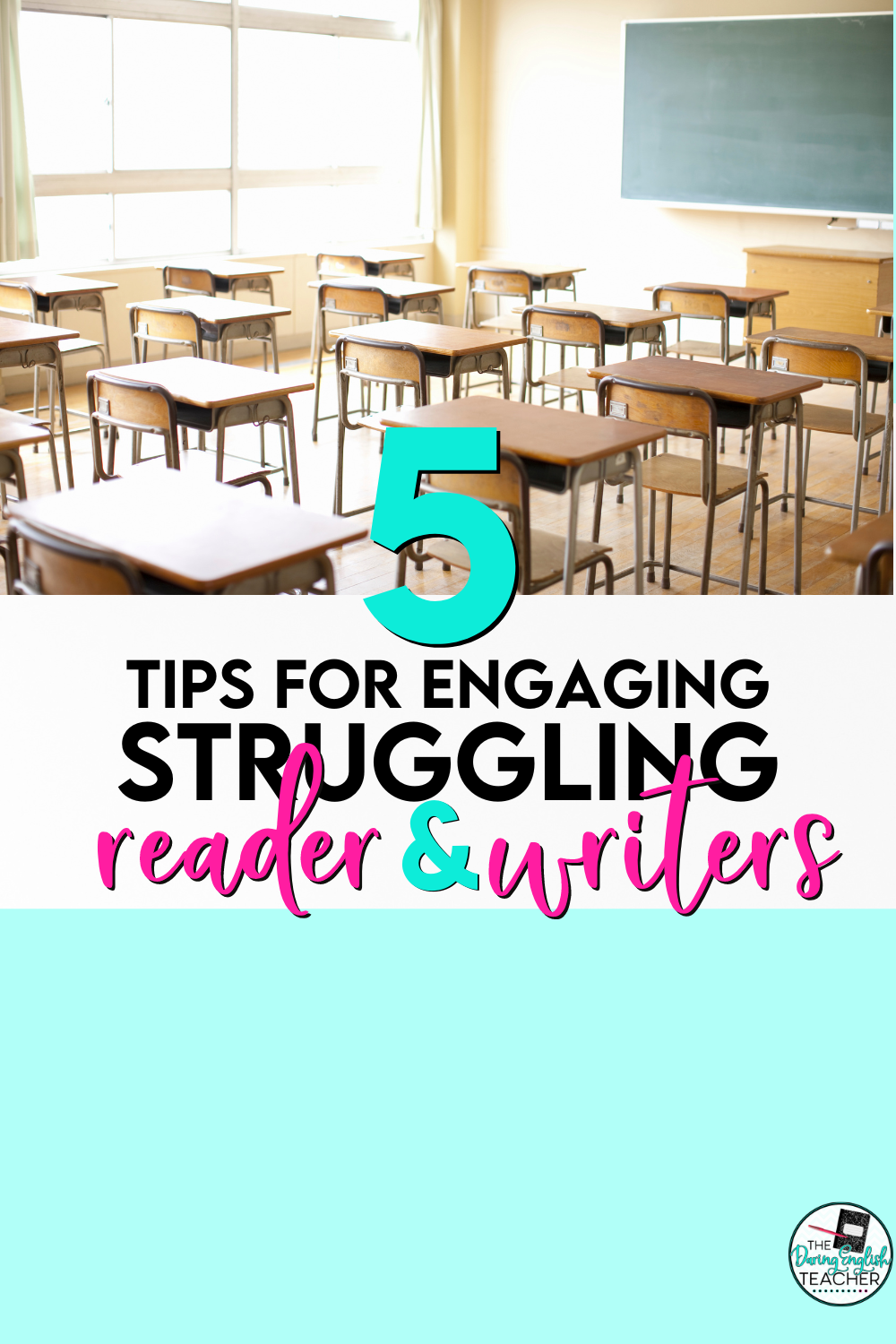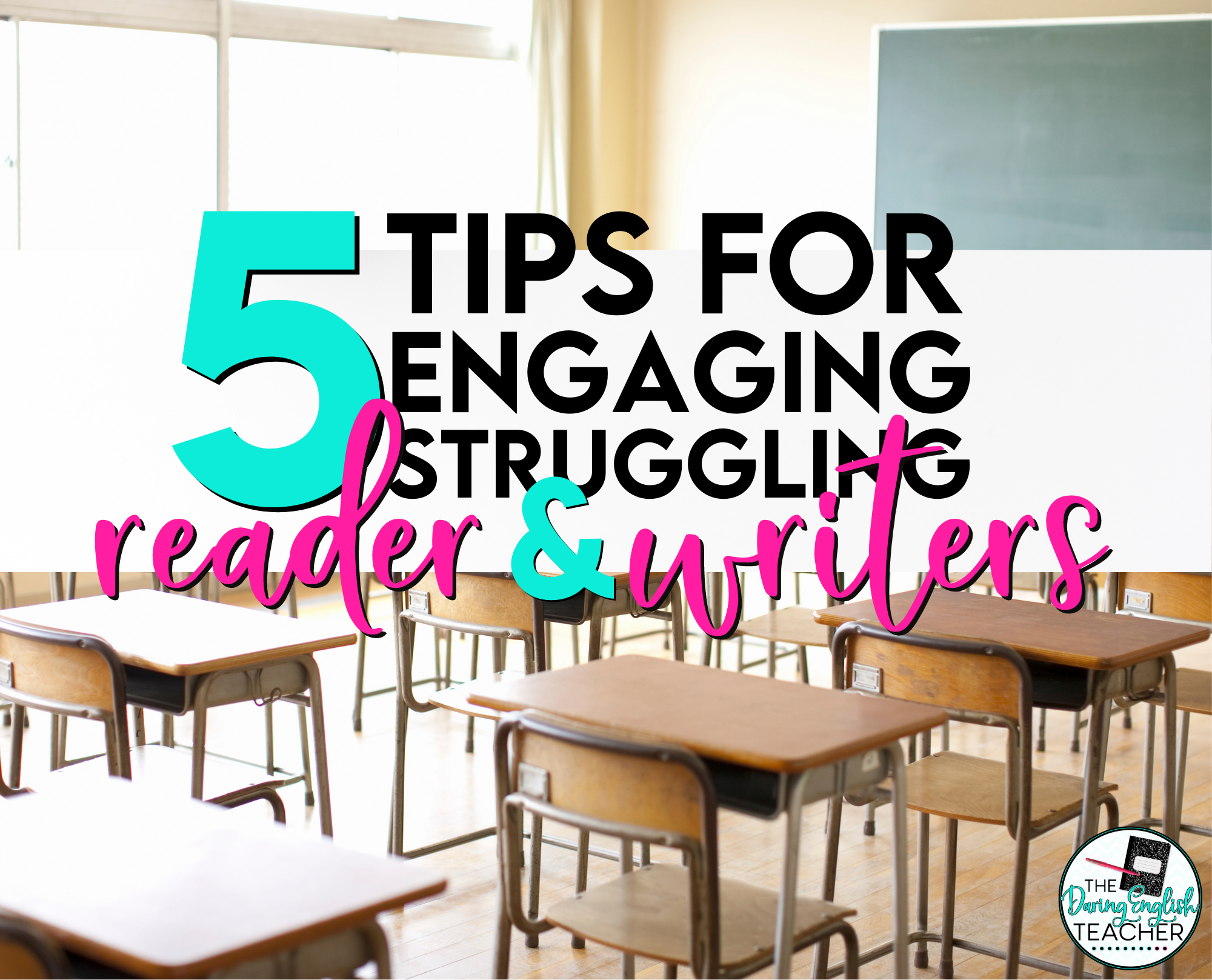This blog post will help provide you with tools and strategies for engaging struggling readers and writers in your classroom. As a high school English teacher, I teach students how to read literature and write essays. In fact, reading and writing form half of the four major pillars of ELA instruction: reading, writing, speaking, and listening.
And while it is essential to engage of the learners in our classrooms, those who need help with reading and writing might be less willing to engage in classroom discussions.
With targeted approaches and support, struggling readers and writers can improve their skills and gain confidence in the high school English classroom.
Here are 5 tips for engaging struggling readers and writers in your classroom:
Create a welcoming and inclusive classroom environment:
Struggling readers and writers can often feel discouraged and frustrated, impacting their motivation to learn. By creating a positive and welcoming environment in your classroom can go a long way in making these students feel comfortable and supported.
One way I do this in my own classroom is to check in on students to see if they have the correct answer before calling on volunteers. By checking in with my struggling students and reassuring them that their answer is correct before asking for volunteers, my struggling students are more likely to participate.
Use a variety of teaching methods:
It’s important to recognize that every student learns differently, and using various teaching methods can help struggling readers and writers engage with the material. I like to incorporate various activities including group work, individual projects, and multimedia presentations in my instruction.
For further reading, I recommend reading this blog post: 8 Ways to Get Students Moving in the Classroom.
Provide frequent and constructive feedback:
Students who struggle with reading and writing often need more frequent feedback to understand how to improve their skills. Providing constructive feedback and praise when they show progress can help boost their confidence and encourage them to continue to improve.
One big misconception about teacher feedback is that it must be time-consuming and arduous. That simply isn’t true. When my students have a formal essay, I give them class time to work. During the class, I walk around the room and ask students which one paragraph they would like me to read. Right then and there, I can quickly provide one-on-one feedback to my students.
Use graphic organizers:
Graphic organizers, such as mind maps or Venn diagrams, can help struggling readers and writers organize their thoughts and ideas. These tools can also make the writing process feel less overwhelming.
I have a graphic organizer for my students whenever we read or write. Something as simple as a KWL chart is effective and engaging for reading. With graphic organizers, it is best to keep it simple and not try to overcomplicate things.
If you are teaching struggling writers, I love using this guided essay outline. It is formatted like a graphic organizer, and it helps students organize their ideas. Each section of the guided essay organizer provides suggestions to students with what to include. Plus, it is also 100% editable and includes a digital component!
Encourage reading for pleasure: 
Encouraging students to read for pleasure can help struggling readers build confidence and improve their reading skills. Consider incorporating independent reading time into your class or recommending books that may interest struggling readers.
One way to do this is to start the class with 5-10 minutes of independent reading. Another way could be to dedicate Fridays to independent reading.
If you are trying to find ways to help bring students up to speed and review key concepts with them, I recommend looking at my five-week ELA review program. Designed with specific grade-level standards in mind, each of these review resources focused on key standards from the prior grade.
These Essential ELA Review units are great for the beginning of the school year.


